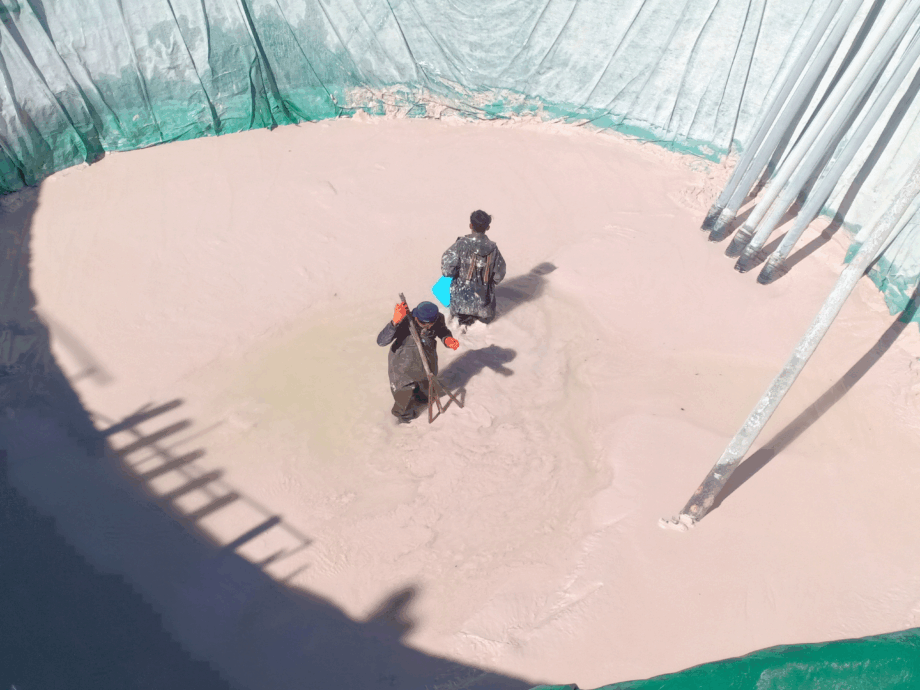China’s Rare Earth Strategy: From Domestic Pollution to Myanmar’s Hills
Rare earth elements (REEs) are the hidden engines of modern technology. These 17 metallic elements are essential for manufacturing everything from smartphones and electric vehicles to wind turbines and missile guidance systems. Yet, the extraction and processing of rare earths is a dirty business—one that has become a flashpoint in global trade and environmental debates. In recent years, China, which dominates the global rare earth market, has shifted much of its most polluting mining activity across the border into Myanmar. This move has profound consequences for the environment, local communities, and the balance of power in the global economy.
- China’s Rare Earth Strategy: From Domestic Pollution to Myanmar’s Hills
- How Rare Earths Became a Geopolitical Weapon
- Myanmar’s Role: From Conflict Zone to Rare Earth Powerhouse
- Who Controls the Mines? Militias, Rebels, and the Shadow Economy
- Regional and Global Consequences: Pollution Without Borders
- Why Myanmar? The Economics of Outsourcing Pollution
- Supply Chain Risks and the Global Response
- In Summary
For decades, China’s southern Jiangxi province was the epicenter of rare earth mining. The environmental toll was staggering: acid leaching and chemical runoff poisoned soils and waterways, prompting Beijing to tighten domestic regulations. Rather than curbing its appetite for these critical minerals, China began outsourcing the dirtiest parts of the supply chain to neighboring Myanmar—a country wracked by civil war and weak governance. Today, Myanmar’s borderlands are ground zero for a rare earth mining boom that is fueling both China’s technological dominance and a mounting environmental crisis.
How Rare Earths Became a Geopolitical Weapon
China’s near-monopoly on rare earth processing—controlling about 90% of the global market—gives it enormous leverage in international trade. The country’s ability to restrict exports of heavy rare earth elements (HREEs), such as dysprosium and terbium, has already disrupted global manufacturing. In April 2025, Beijing sharply limited exports, causing shutdowns at Suzuki assembly lines in Japan, Ford plants in the United States, and several European suppliers. These metals are not just vital for green technologies; they are also critical for advanced military systems, making them a national security concern for the U.S., EU, and other major economies.
China’s strategy is clear: by controlling both the mining and processing of rare earths, it can weaponize these resources in trade disputes or geopolitical standoffs. This approach mirrors Beijing’s 2010 embargo against Japan, but the stakes are now much higher as the world races to transition to renewable energy and advanced technologies. As one analyst from The Diplomat put it, “China has positioned itself as the gatekeeper of these crucial resources.”
Myanmar’s Role: From Conflict Zone to Rare Earth Powerhouse
Myanmar’s emergence as a rare earth supplier is a direct result of China’s environmental crackdown and the country’s own political turmoil. Since the 2021 military coup, Myanmar has been engulfed in civil war, with the junta, ethnic militias, and rebel groups all vying for control of resource-rich territories. In this lawless environment, Chinese companies—often operating through local proxies or with the backing of armed groups—have rapidly expanded mining operations in Kachin and Shan states.
According to Global Witness, imports of heavy rare earths from Myanmar to China more than doubled between 2021 and 2023, cementing Myanmar’s role as China’s largest external source. In 2023, Myanmar supplied about 60% of the global output of dysprosium and terbium—two elements critical for permanent magnets used in electric vehicles and wind turbines. The scale of extraction is staggering: satellite imagery shows mining sites in Kachin Special Region 1 increased by over 40% in just two years, with more than 300 mines and 3,000 extraction pits operating in 2023 alone.
Mining Techniques and Environmental Impact
The dominant extraction method in Myanmar is in-situ leaching, where chemicals like ammonium sulphate and oxalic acid—mostly imported from China—are injected into the earth to dissolve rare earth minerals. The resulting toxic solution is collected in ponds, then processed into rare earth oxides. This technique is cheap and efficient, but it comes at a devastating environmental cost. Rivers run red with chemical runoff, forests are stripped bare, and biodiversity is decimated. Heavy metals like arsenic contaminate the Kok and Mekong rivers, posing serious health risks to communities in both Myanmar and downstream in Thailand’s Chiang Rai province.
Lahtaw Kai, an activist in Kachin state, described the scene:
“The rivers are turning red, the fish are dying, and people are getting sick. The mining companies don’t care—they just want the minerals.”
Local residents report water contamination, loss of fish and crops, and rising health problems, including skin diseases and respiratory issues. The environmental destruction is so severe that some experts warn parts of Kachin and Shan states could become uninhabitable if mining continues unchecked.
Who Controls the Mines? Militias, Rebels, and the Shadow Economy
The rare earth boom in Myanmar is not just an environmental disaster—it is also fueling conflict and corruption. Control of mining sites is a major source of revenue for both the military junta and various ethnic armed groups. After the 2021 coup, military-aligned militias initially dominated the trade, but by late 2024, the Kachin Independence Organization/Army (KIO/A)—a long-standing resistance group—captured key mining zones in Kachin state. In Shan state, the powerful United Wa State Army (UWSA), which has close ties to Beijing, protects new mining operations and controls export routes to China.
Chinese companies often operate through local proxies or joint ventures with these armed groups, paying taxes or protection fees in exchange for access to mineral-rich lands. The result is a shadow economy where profits flow to warlords, militias, and foreign investors, while local communities bear the brunt of environmental and social costs. As The New York Times reported, “In the chaos of war, there’s nothing to stop Chinese firms from ravaging the landscape and extracting the minerals, which end up in China.”
Social Fallout: Displacement, Crime, and Exploitation
The rare earth rush has brought a wave of social problems to Myanmar’s borderlands. Indigenous communities have been displaced from ancestral lands, traditional farming areas have been transformed into toxic mining zones, and social ills like drug use and crime have escalated. The Business and Human Rights Resource Center has documented numerous violations, including forced relocations, labor abuses, and the destruction of cultural heritage sites. With little oversight or accountability, these abuses continue unchecked.
Regional and Global Consequences: Pollution Without Borders
The environmental impact of Myanmar’s rare earth mining does not stop at the border. Chemical runoff and heavy metal contamination have flowed into Thailand’s Chiang Rai province, polluting the Kok and Sai rivers and threatening the health of millions. Pianporn Deetes, Director of Southeast Asia Campaigns at International Rivers, warned:
“This is the largest cross-border pollution crisis Thailand has ever faced. The only solution is to halt mining activities.”
Restoring rivers contaminated with heavy metals is extremely difficult and time-consuming. The crisis has already disrupted traditional livelihoods like fishing and rice farming, and there are fears that contaminated rice could enter the food supply. The Thai government has been slow to respond, prompting calls for urgent diplomatic action with Myanmar and China to address the crisis.
Why Myanmar? The Economics of Outsourcing Pollution
China’s decision to shift rare earth mining to Myanmar is driven by both economics and environmental policy. The cost of producing heavy rare earths in Myanmar is up to seven times cheaper than in China, thanks to lax regulations and minimal oversight. By outsourcing the dirtiest parts of the supply chain, China can maintain its dominance in rare earth processing and manufacturing while reducing domestic pollution. Meanwhile, the value-added stages—refining and magnet production—remain firmly under Chinese control.
Myanmar, despite intensive mining, is not listed among the world’s top rare earth reserve countries. It serves primarily as a transit point for initial extraction, with minerals shipped to China for further processing. This arrangement allows China to externalize environmental costs while reaping the economic and strategic benefits.
Supply Chain Risks and the Global Response
The world’s dependence on Myanmar’s rare earths has created a fragile supply chain vulnerable to conflict, political instability, and environmental disaster. Disruptions in Myanmar—such as the KIO/A’s seizure of mining areas in late 2024—have caused rare earth prices to spike and exposed the risks of overreliance on a single source. Western companies, including major automakers and wind turbine manufacturers, are increasingly concerned about the ethical and environmental risks embedded in their supply chains.
Efforts to develop alternative sources of rare earths in Laos, Malaysia, Australia, and the United States are underway, but these projects face significant technical, economic, and regulatory hurdles. Recycling of rare earths remains limited, with most recycled material coming from manufacturing waste rather than end-of-life products. As a result, the risk of Myanmar-sourced rare earths entering global supply chains remains high.
Calls for Reform and International Action
Environmental groups and activists are calling for a halt to unregulated mining in Myanmar until proper safeguards are in place. Recommendations include:
- Developing responsible and transparent supply chains
- Enforcing due diligence requirements for companies sourcing rare earths
- Investing in recycling and alternative technologies to reduce reliance on HREEs
- Imposing targeted sanctions on companies involved in environmental destruction and human rights abuses
Without decisive action, ongoing mining threatens to devastate more of Myanmar’s environment and communities, leaving behind polluted, uninhabitable land and fueling further conflict.
In Summary
- China has shifted much of its polluting rare earth mining to Myanmar, exploiting the country’s weak governance and ongoing conflict.
- Myanmar now supplies the majority of the world’s heavy rare earth elements, critical for green technologies and advanced military systems.
- The extraction process is environmentally destructive, causing severe pollution, health problems, and cross-border contamination in Thailand.
- Control of mining sites is a major source of revenue for both the military junta and ethnic armed groups, fueling conflict and corruption.
- China’s dominance in rare earth processing gives it significant leverage in global trade, but also exposes the world to supply chain risks.
- Efforts to develop alternative sources and responsible supply chains are underway, but progress is slow.
- Activists and experts warn that without urgent reform, Myanmar’s rare earth boom will leave a legacy of environmental devastation and social upheaval.




